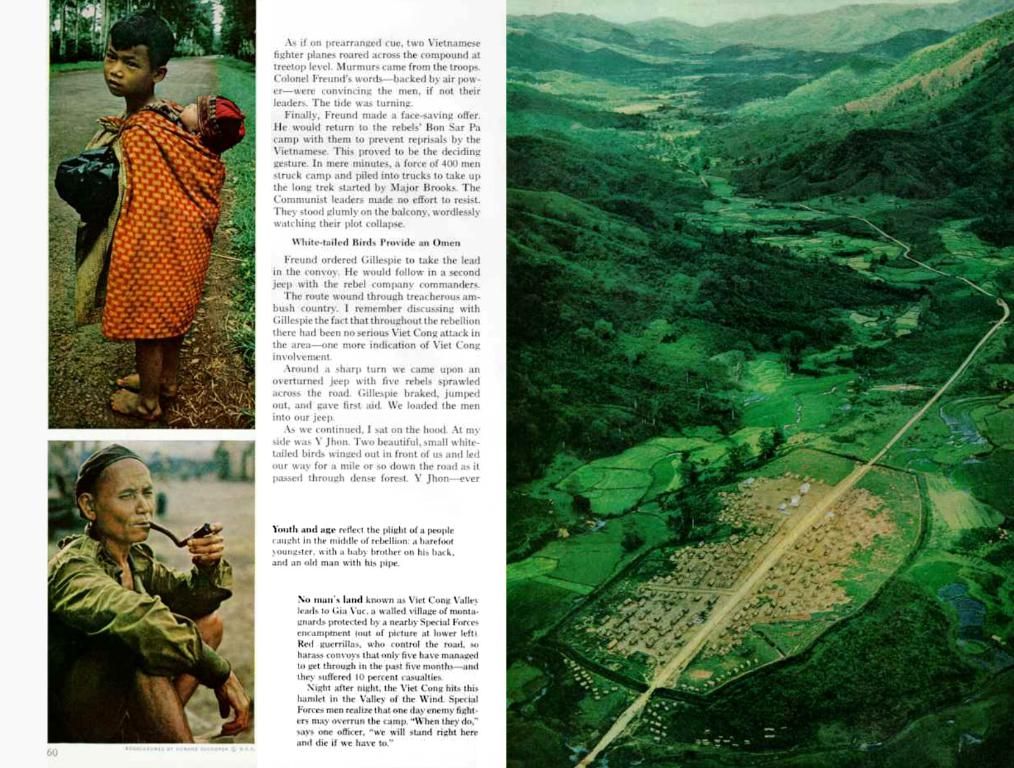Instructions on the Seven Distinct Styles of Arabic Calligraphy Artistry
Check out the ancient and beautiful world of Arabic calligraphy! This centuries-old art form is renowned for its fluid, curvy script and has a deep roots in Arabic culture. Historically handwritten with colorful ink on thick card or paper, calligraphy is a significant part of the Middle Eastern cultural heritage.
Originally used to preserve religious texts like the Quran, calligraphy today is also used to write poetry, powerful passages, and even adorn buildings. Its appearance is largely influenced by the tools used, such as hollow dried reeds, bamboo, and other plants.
Arabic calligraphy has developed numerous distinct forms over the years, owing to regional variations and philosophical approaches. This makes it easy to date the period and geographical origin of a calligraphic work.
Let's explore seven unique styles of calligraphy:
- Kufic: This popular style, originating around the 7th century in Kufa, Iraq, features angular, geometric letter shapes. Widely used in early Quranic manuscripts and architectural decoration, Kufic script often appears in monumental inscriptions and decorative panels.
- Naskh: Developed in the 10th century, Naskh is a cursive script known for its legibility and used extensively in books and official documents. It became the basis for modern Arabic typefaces and remains popular in print. The script is characterized by rounded letterforms and a flowing style, making it suitable for continuous writing.
- Thuluth: Originating in the 9th century, Thuluth is known for its large, elegant, and cursive letters with long verticals and broad spacing. Often used for religious texts, inscriptions on buildings, and decorative purposes, this script’s name means "one-third," referring to the proportion of pen nib used.
- Muhaqqaq: A classical script prominent from the 10th to 14th centuries, Muhaqqaq was favored for copying Quranic manuscripts due to its clarity and grandeur. This script features strong, sweeping strokes and was popular in Central Asia and Mamluk Egypt and Syria.
- Diwani: Developed in the Ottoman Empire during the 16th century, Diwani is a highly decorative, flowing script used in royal decrees and correspondence. Its stylistic complexity includes intertwined letters and flourishes, making it difficult to read, thus ideal for secure writing.
- Tumar: A rare and bold script that emerged in Mamluk Egypt and Syria, primarily used in administrative documents and large-scale manuscripts. Tumar script is notable for its sweeping, rhythmic lines and was often enclosed within decorative abstract outlines.
- Hijazi: An ancient script style used in early Quranic manuscripts, typically with broad letters and a distinctive slanted form. The Hijazi script traces back to early Islamic history and is preserved in early parchment documents.
Today, these styles still inspire modern Arabic calligraphy fonts and designs, blending traditional elements with contemporary aesthetics. The art of Arabic calligraphy represents both religious and secular contexts, expressing cultural identity and artistic innovation across centuries.
News outlets analyze the impact of Arabic calligraphy on media, architecture, and lifestyle. In the Middle East, Iran, Syria, Palestine, and Israel, unique calligraphic styles like Kufic, Naskh, Thuluth, Muhaqqaq, Diwani, Tumar, and Hijazi were developed. These scripts have been used for various purposes, including religious texts, poetry, and building adornments. Recently, these traditional forms have influenced modern home-and-garden designs and fashion trends, showcasing a fusion of ancient and contemporary styles. The media continues to feature pieces on the cultural significance of Arabic calligraphy and its role in preserving history and heritage.




